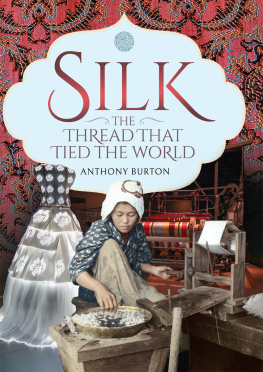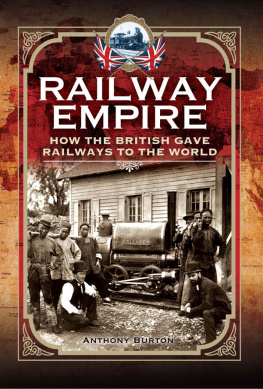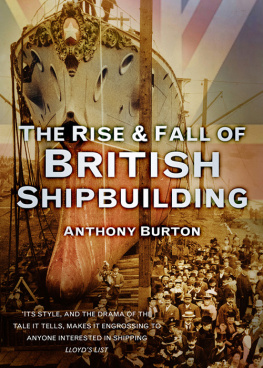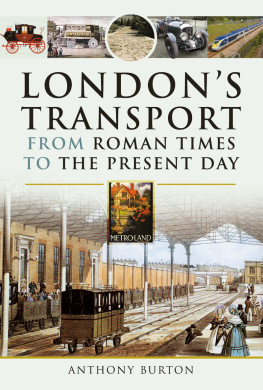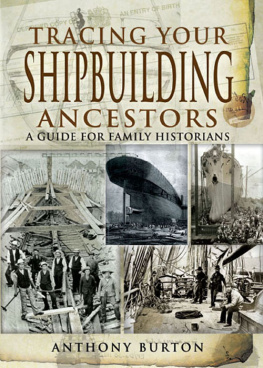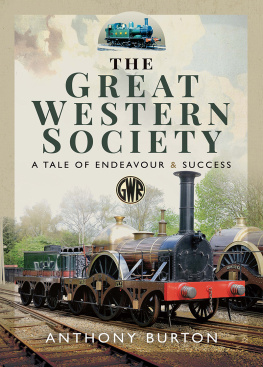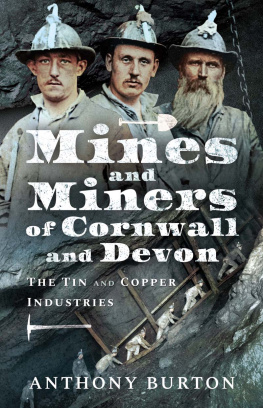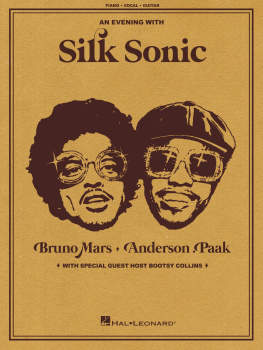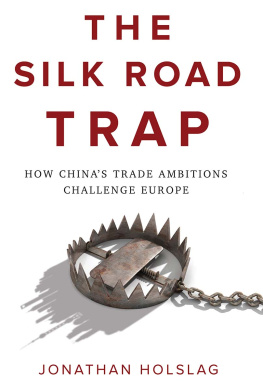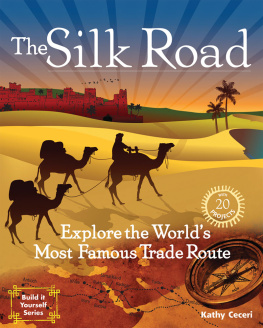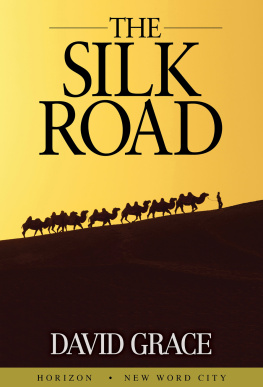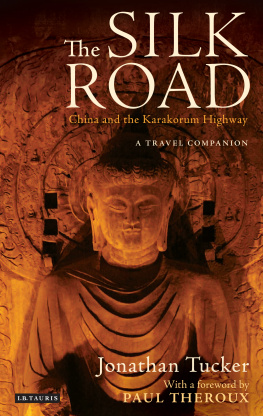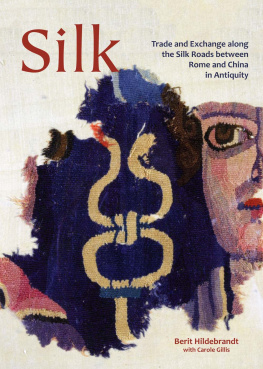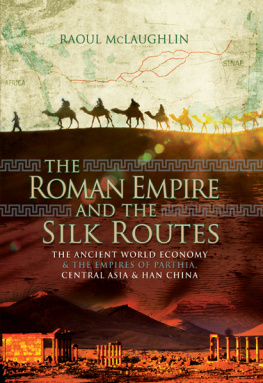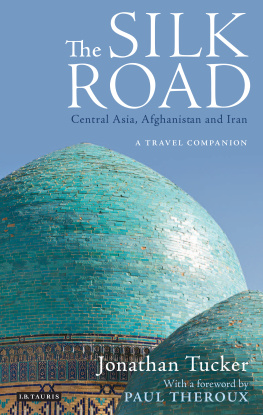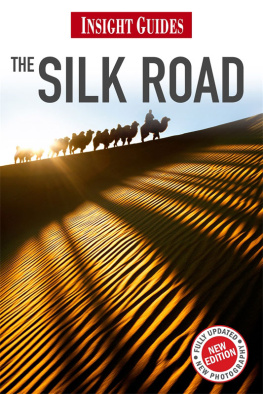Pagebreaks of the print version

Silk
The Thread that Tied the World
Silk
The Thread that Tied the World
Anthony Burton
First published in Great Britain in 2021 by
Pen and Sword History
An imprint of
Pen & Sword Books Ltd
Yorkshire - Philadelphia
Copyright Anthony Burton, 2021
ISBN 978 1 52678 092 8
ePUB ISBN 978 1 52678 093 5
The right of Anthony Burton to be identified as author of this work has been asserted by him in accordance with the Copyright, Designs and Patents Act 1988.
A CIP catalogue record for this book is available from the British Library.
All rights reserved. No part of this book may be reproduced or transmitted in any form or by any means, electronic or mechanical including photocopying, recording or by any information storage and retrieval system, without permission from the Publisher in writing.
Pen & Sword Books Ltd incorporates the Imprints of Pen & Sword Books Archaeology, Atlas, Aviation, Battleground, Discovery, Family History, History, Maritime, Military, Naval, Politics, Railways, Select, Transport, True Crime, Fiction, Frontline Books, Leo Cooper, Praetorian Press, Seaforth Publishing, Wharncliffe and White Owl.
For a complete list of Pen & Sword titles please contact
PEN & SWORD BOOKS LIMITED
47 Church Street, Barnsley, South Yorkshire, S70 2AS, England
E-mail:
Website: www.pen-and-sword.co.uk
or
PEN AND SWORD BOOKS
1950 Lawrence Rd, Havertown, PA 19083, USA
E-mail:
Website: http://www.penandswordbooks.com
Acknowledgements
The author wishes to thank to thank the following for providing the illustrations on the pages shown below 13, Maigorzala Milaszewska; 14, Adam Jones; 16, photo by Isabella Lucy Bird; 17, David Clay Photographer; 18, Simony; 20 Wellcome Trust; 23 Shone Atika Span; 24 Gabriel Moss; 26, PD-art; 27, Adam Jones; 28, CC-Archival Images; 33, NASA; 34, G4 im; 35, Shanghai Museum; 36, PM history; 38 Wellcome Trust; 41, jingjangjing; 47, Ggia; 49, Hirkina Makchoemi; 51, emell; 54, Aachen Cathedral Treasury; 57, Fabien Dany; 59, Dan Ruth; 60, Victoria and Albert Museum; 61, Sialkgraph; 64, Cleveland Museum of Art; 66, Detroit Institute of Art; 68, Bequest of John L. Severance; 69, Daderot; 71, Ismoom; 73, Henry Townsend; 75, Widemer Collection; 76, Wellcome; 81, Dogcow; 83, Conservatoire des Arts et Metiers; 86, 87, Mme. Pivier; 89, Smithsonian Design Museum; 91, Rob Scott; 96; Bobulous; 98, A. Heeren; 100, Daderot; 101, Wellcome Trust; 105 Derby Museum; 107, Hugo Maertens; 115, Box River Studio; 116 Stephen Walters; 117, Clem Rutter; 120, Snowmanradio; 121, 122, Smithsonian Design Museum; 123, Auckland Museum; 128 Yercaud-lango; 131, Wellcome; 134, Tim Green; 142, Jeff Kubon; 144, 145, US National Archives and Records Administration; 147, Andrew Jameson; 148, 149, US National Archive; 150, New York Public Library; 155, 159, 160, Auckland Museum; 163, US National Archives and Records; 164, Sloan Foundation; 165, Popular Science Monthly; 167, Meiji Memorial picture gallery; 168 University of Victoria Library; 171, Hiart; 173; National Archive, Netherlands; 176, McKay Savage; 177 (top), Mayondas; 177(below), Satnath;178, J.J. Harrison; 180, Peter K. Burian; 182, Charles J. Sharp; 184, Cmglee; 186, Ismoon
Preface
As Desmond Morris pointed out some years ago, human beings are basically just naked apes, and as such we lack the protection of our simian ancestors. Clothes initially did no more than protect us from the elements but in time they started to become more elaborate and decorative. As society developed and became hierarchical, clothes also became indicators of wealth and position, and no material has ever been developed that gave higher status and prestige than silk. It has been doing do for some five thousand years. That alone makes it an interesting subject to study, but there is more to it than that. It was silk that brought east and west together through trade, and along that trade route flowed ideas, technologies and religions.
I was brought up in what was then the West Riding of Yorkshire, famous as a centre for the wool industry, and as a boy went to the local school in Knaresborough. The mill down by the River Nidd was not making woollen cloth, but a finer material, linen, and we were taken there on a school visit. I found the machinery for textile manufacture fascinating and still do. I first started researching the history of textiles for my book Remains of a Revolution , published in 1975, and later went on to write about the cotton industry. In working on that book and the accompanying BBC TV series, I visited India and had a chance to see a little of the exquisite work being done by craftsmen weaving silk. It, however, remained a subject of comparatively minor interest for me, until I began working on a series of documentary programmes for Discovery Channel. I was able to spend time in Lyon, visiting the excellent silk museums, workshops and factories and discovered a great deal of the history of the industry in that city. Back in the UK, I continued with visits to silk mills in Essex and Hampshire and museums in Macclesfield. The more places I visited, the more intriguing the story became.
It was in Lyon, seeing punched tape and at the same time was using punched cards to contain records. The more I looked into the history of silk and the Silk Road, the more interesting it became and the more it seemed that this remarkable substance produced by a rather boring looking moth had a central role in the development of so many aspects of our lives. My visit to Lyon took place more than a decade ago but that is where this book had its beginnings.
Anthony Burton
Stroud 2021
Glossary
Indian silk produced by the wild silk moth Bombyx Mandarina . The moth is allowed to go through its complete life cycle, and the silk thread is obtained from the opened cocoons.
A decorative technique which, as the name implies, involves sewing a piece of fabric onto the base cloth to produce a raised motif.
An ornate woven silk cloth in which an extra weft thread had been added above the woven cloth to give the impression the material has been embroidered. The name comes from the Italian Brocatto for raised cloth. It would have first been mainly manufactured on a draw loom.
Calendering A process in which cloth is folded in half, so that the faces are in the centre. The cloth is then pressed under a roller to produce a shiny finish.
Drawing fibres through wires to align them. The technique is only used for waste silk, not for silk from unbroken cocoons.
A figured cloth which, unlike brocade, is produced with just single weft threads. The pattern is generally produced by means of a warp-faced satin weave. The name derives from the fact that the first cloths to reach Europe in this style came from Damascus.
The draw loom was developed to make it possible to weave elaborate patterns, by manipulating the warp. A boy perched on top of the loom, raising the appropriate healds for each pass of the shuttle.
A combing process used to separate and align the filaments of wild silk.
This is similar to Ahimsa silk in that the moth is also allowed to complete its life cycle. The moth is officially known as Samia Ricini but gets its common name from the Assamese word era meaning castor, because the moth feeds on that plant.
A term applied to any silk fabric with a woven pattern.
A cord with an eyelet through which the warp thread is passed. Healds are raised and lowered to create a space the shed through which the shuttle can pass with the weft.

